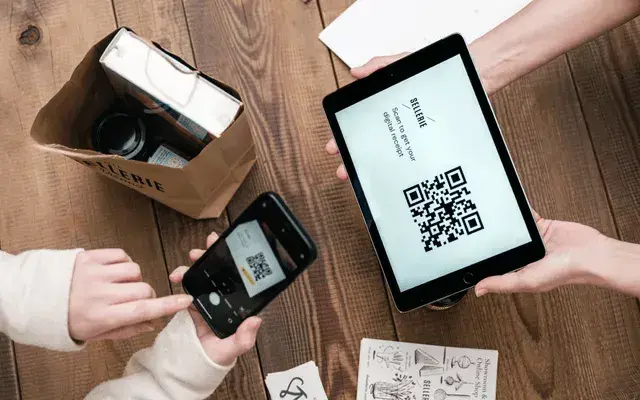
Static or dynamic QR code - we have the answer
One of the most frequently asked questions about the digital receipt is, "How does the receipt get on my device?" Issuing receipts by e-mail or SMS is one of the standard transmission methods. However, transmission via QR code is much more convenient and faster for consumers and merchants. Therefore, we distinguish between the two options of static and dynamic QR codes.
QR code: Dynamic & Fast
The dynamic QR code is shown to the customer directly on the display of the POS device after payment. The customer scans it with the help of their smartphone and gets the receipt displayed directly in the device's browser. The dynamic QR code is individual for each transaction. It is regenerated and displayed each time after the payment is completed. A dynamic QR code's information can be changed as often as needed, even after it is created.
Pros & Cons
- Pros: Simplified process for transactions for both merchant and consumer. Faster in completing the process.
- Cons: Requires a display to show the QR code. Possibility of other customers (unintentionally) scanning the QR code as well.
QR Code: Static & Location Independent
A static QR code has a URL embedded in the code that cannot be changed once it is created. The process of issuing a digital receipt with a static QR code works like this:
Before payment
- When the QR code is scanned, the embedded URL takes the customer to a website where an automatically generated numeral code is displayed.
- The merchant scans the code or enters it manually into the POS system and transfers it to the system when the digital receipt is created.
After payment
- Once the digital receipt is generated, the website is updated on the customer's device, and the digital receipt is displayed.
Pros & cons:
- Advantages: No electronic display is needed at the checkout to show the QR code. Instead, the static QR code can be presented to the customer as a table display, sticker, or badge. Thus, there is no contradiction in the compatibility of electronic receipts when used with cash registers that only have one display. Furthermore, delivery via the static QR code guarantees unambiguous transmission to the target customer, eliminating the need for data protection and security questions.
- Disadvantages: The scanning process with a static QR code on site is more complicated and takes longer than with a dynamic QR code (for merchants and consumers).
Examples of good practice
In the hospitality industry, everything has to happen fast. During the payment request & process, guests quickly become impatient. This is where dynamic QR codes come in handy to speed up the process even more.
In the consumer goods sector, customers take more time to select the right product or to get advice. In many outlets (depending on size and turnover), stationary cash registers, which do not have an electronic display oriented toward the customer, are predominantly used. Static QR codes are a practical alternative to offer customers digital receipts.
To get started with digital receipts in an uncomplicated way, we recommend the option of dynamic QR codes. With the right equipment, dynamic QR codes enable quick and easy transactions. If the investment is an important parameter in the realization, static QR codes are an excellent alternative, as they can be guaranteed without the need to purchase new hardware.




